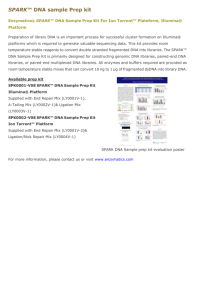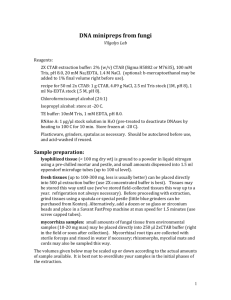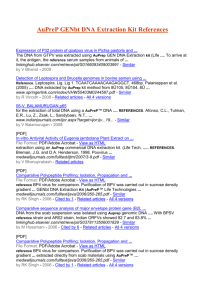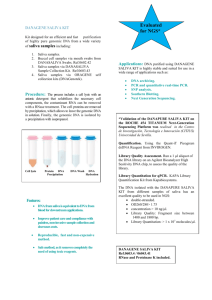Supplementary Material Analysis of cbbL, nifH and pufLM in soils
advertisement
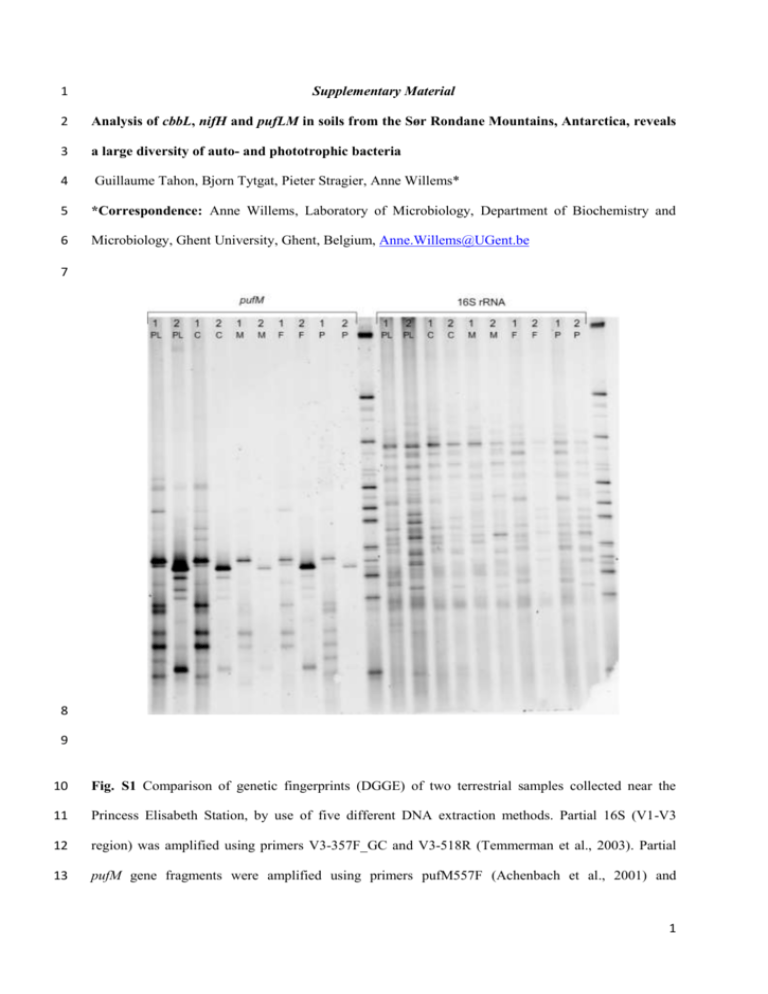
1 Supplementary Material 2 Analysis of cbbL, nifH and pufLM in soils from the Sør Rondane Mountains, Antarctica, reveals 3 a large diversity of auto- and phototrophic bacteria 4 Guillaume Tahon, Bjorn Tytgat, Pieter Stragier, Anne Willems* 5 *Correspondence: Anne Willems, Laboratory of Microbiology, Department of Biochemistry and 6 Microbiology, Ghent University, Ghent, Belgium, Anne.Willems@UGent.be 7 8 9 10 Fig. S1 Comparison of genetic fingerprints (DGGE) of two terrestrial samples collected near the 11 Princess Elisabeth Station, by use of five different DNA extraction methods. Partial 16S (V1-V3 12 region) was amplified using primers V3-357F_GC and V3-518R (Temmerman et al., 2003). Partial 13 pufM gene fragments were amplified using primers pufM557F (Achenbach et al., 2001) and 1 14 GC_WAWR (Yutin et al., 2008). Gene fragments retrieved were visualized using DGGE. Lanes 15 designated as 1 and 2 correspond with the two terrestrial samples tested. Different DNA extraction 16 methods used are labeled as PL (PowerLyzer® PowerSoil® DNA Isolation Kit), C (CTAB), M 17 (Muyzer), F (FastDNA™ SPIN Kit for Soil) and P (Pitcher). In total, seven different DNA extraction 18 methods were tested: CTAB, Pitcher, Muyzer, PowerLyzer® PowerSoil® DNA Isolation Kit, 19 FastDNA™ SPIN Kit for Soil, PowerSoil® DNA Isolation Kit and UltraClean Soil DNA Isolation 20 Kit. For all methods, protocols were tested with and without modifications (e.g. the influence of bead 21 bating or an extra lysis step), to optimize DNA yield and diversity. Partial pufM and 16S rRNA were 22 amplified as described above and visualized using DGGE. The resulting best five DNA extraction 23 methods were compared in the figure 24 2








